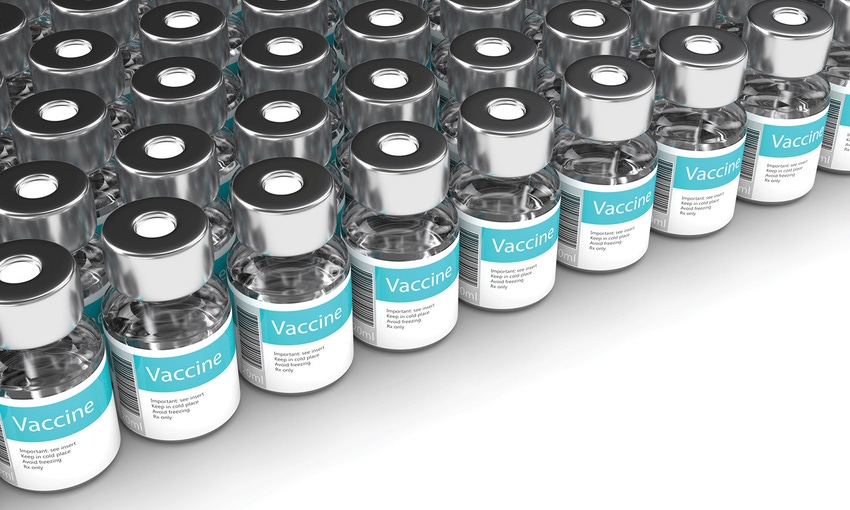- Livestock & Poultry Market news
- Nutrition & Health
- Swine Health and Nutrition
- Beef Health and Nutrition
- Dairy Health and Nutrition
Herd history, vaccine type, method of administration and age of animal all come into play.
September 13, 2021

Vaccines are crucial to keeping livestock healthy and productive. While vaccines do not provide absolute protection, the “added insurance” helps stimulate the animal’s immune system and increases its ability to fight off an infection or lessen the impact of disease if it should occur.
However, with timing, labor constraint, and the necessity for boosters, South Dakota State University (SDSU) Extension Veterinarian and State Public Health Veterinarian Russ Daly says there are several factors to consider before implementing a vaccination program.
“Herd history, vaccine type, method of administration and age of animal all come into play, so it is critical for producers to work with their local veterinarian in developing a vaccination program,” Daly says. “They have experience with and knowledge of the many different vaccines, as well as the disease issues in area herds.”
Most vaccines are either modified-live virus (MLV) or inactivated “killed.” MLV vaccines contain whole germs that have been altered such that, while they are able to multiply within the body, their ability to cause disease has been taken away. Inactivated vaccines contain bacteria or viruses that have been inactivated by heat or chemicals.
Whether the producer/veterinarian team chooses an inactivated or MLV vaccination program, Daly says it’s important that the vaccines don’t go past their prime.
“Proteins are the major components of the organisms that make up both killed and MLV vaccines, and they disintegrate according to two major factors: time and temperature. As time passes, the proteins that make up the vaccine organisms break up into smaller parts. Eventually, given enough time, there will no longer be enough intact organisms to effectively stimulate an immune response,” Daly says. “Also, storage temperatures higher than label recommendations will result in a quicker rate of disintegration and will reduce the effectiveness of any vaccine, whether inactivated or MLV. At the other extreme, freezing temperatures will also adversely affect vaccines.”
In addition to time and temperature, common disinfectants and ultraviolent light can reduce the viability of modified-live organisms. “Modified-live vaccines will only remain viable for an hour or two following their rehydration, even if they are kept cool,” Daly says.
Daly recommends the following tips for handling, storing and using vaccines:
1. Purchasing vaccines and equipment: Observe expiration dates prior to purchase. Purchase the appropriate type and sufficient number of needles for the job. Plan on replacing needles when they become bent, dull or dirty, and before drawing up vaccine into the syringe.
2. Transporting and storing vaccines: Keep boxes and bottles cool and out of sunlight while in transport. Use frozen ice packs in an insulated box in the summer and prevent vaccines from freezing in the winter. Prior to use, store vaccines in a properly working refrigerator.
3. Equipment and work area: Use clean syringes, but not those that have had internal parts cleaned with soap or chemical disinfectants, including alcohol. Set up an area for syringes such that they are shaded and kept cool and dust-free while working.
4. While working: Keep vaccine bottles in a closed cooler with ice packs (summer) or hot packs (winter) until they are needed. When using MLV vaccines, rehydrate the vials either one at a time as they are needed or as many as you will use within an hour. Always use a brand-new needle to draw vaccine into the syringe. Protect syringes from heat, light and freezing while working. When using needle-free injection systems, or syringes that draw doses from a tube attached to the vaccine bottle, care should be taken to assure the bottle and tubing stay cool and shaded from sunlight.
5. After the job is complete: Discard any unused MLV vaccine that has been reconstituted. Discard any partial bottles of inactivated vaccine that have been contaminated by dirty needles. Return unmixed MLV and unused inactivated vaccines to a properly working refrigerator as soon as possible. Clean syringes, transfer needles and tubing. Follow the manufacturer’s directions on proper cleaning and maintenance of needle-free injection systems.
You May Also Like



